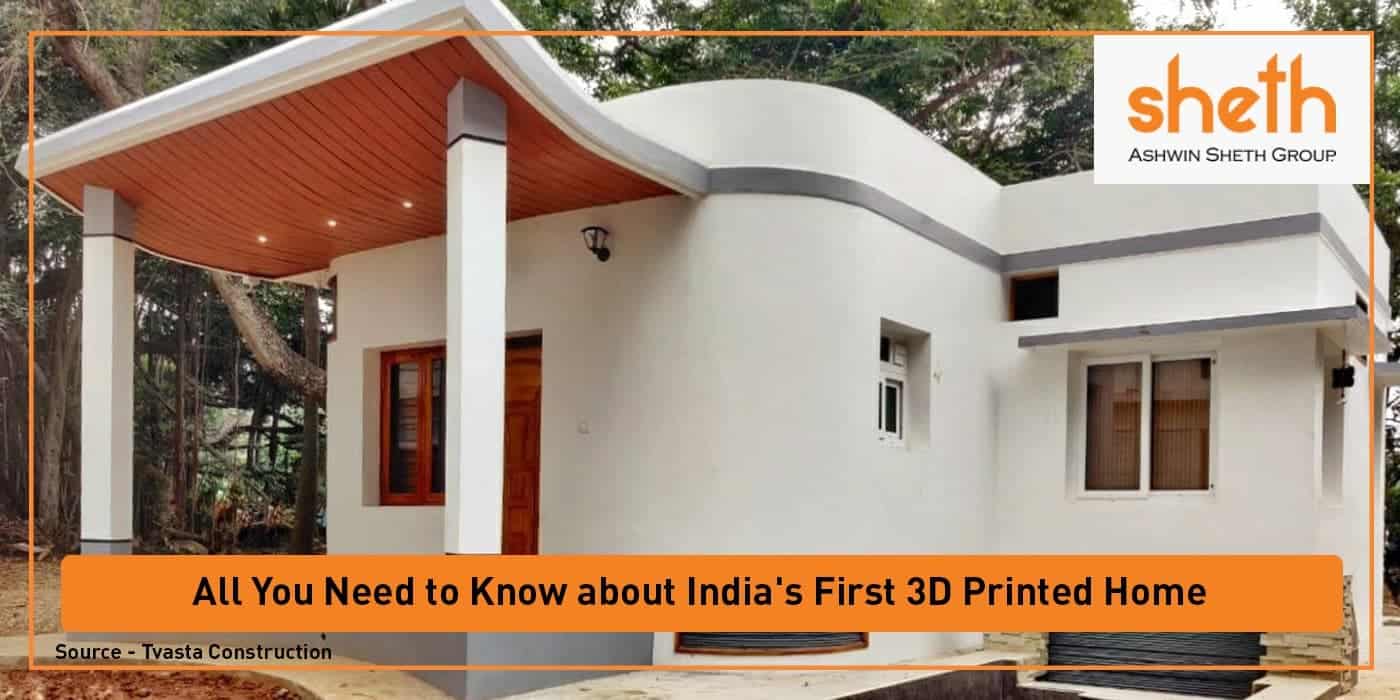Alan Kay, a computer scientist once famously said, The best way to predict the future is to create it. And this adage has certainly been proven true as India’s first 3D printed home has been successfully constructed in Chennai – a 600 square feet abode furnished with a bedroom, hall, and kitchen!
A tech startup founded in 2016 by three alumni of IIT Madras has innovatively used 3D printing technology to push the boundaries of conventional construction and make affordable housing alternatives available for people today. With the lifespan of this 3D printed home exceeding 50 years, here is everything you need to know about this one-of-a-kind digitally printed home today.
Design And Construction Process
The process of building such a home is quite different, as the technique requires a concrete 3D printer that receives a three-dimensional design file and then fabricates a structure, layer by layer. The concrete mix used for the construction was also specially developed by the tech company itself – an extrudable concrete mix created by adding raw materials such as cement, sand, geopolymers and fibres to a large hopper. This mix is a base of ordinary cement which has a lower water to cement ratio.
Moreover, the structure of the home was designed hollow, which allows provisions for wiring and plumbing as well as prevents the wall from being damaged. The startup also states that its concrete 3D printing technology has evolved significantly. This allows them to perfectly integrate unique 3D printed home decor elements in the house, anything ranging from 3d printed mesh walls to even stairway decor!
Advantages of Building A 3D Printed Home
After building the 3D printed home, many significant advantages were observed relating to the construction process. While conventional home construction requires much more time and even extensive transportation of materials, using 3D printing technology instead overcomes many such challenges in real estate. Here are a few noteworthy benefits.
- Quick Construction Time – While constructing a house usually requires 4 to 5 months, using 3D printing technology makes it possible to build it in just a matter of 5 days! This was primarily due to the use of robotic systems and automation technologies.
- Low Cost of Construction – The cost of building this home was approximately 5 to 5.5 lakhs. A major factor here is that 3D printing a home requires less raw material and since these materials are locally sourced, it reduces the transportation costs too. With the overall construction costs reduced by around 30 percent – such 3D printed homes are certainly the answer to affordable housing!
- Lowers Carbon Footprint – The raw materials used contain industrial waste as well as recycled material. This is why building such a home is more sustainable and eco-friendly, thereby reducing carbon footprint during construction. Moreover, a 3D printed home is built and customised as per the climate conditions in an area. Thus, any additional cooling or heating requirements will be minimal, which will further help to reduce overall energy consumption!
With so many benefits, it can be predicted that the 3D printing idea for home building is here to stay. The finance minister, Nirmala Sitharaman certainly thinks so too. As she virtually inaugurated the 3D printed home, she commented that India definitely needs such solutions which do not require much time.
Sitharaman further went on to say, “With the Prime Minister’s goal of ‘Housing for All by 2022,’ we have a huge challenge before us. A huge challenge of meeting that deadline and making sure that people who need houses get it at an affordable price. Conventional housing requires timing, material, logistics, transporting of material, and so on. But if this technology can produce houses in different locales at five days per house, it would not be a big challenge to build 100 million houses by 2022*


 +91-22-69315859
+91-22-69315859